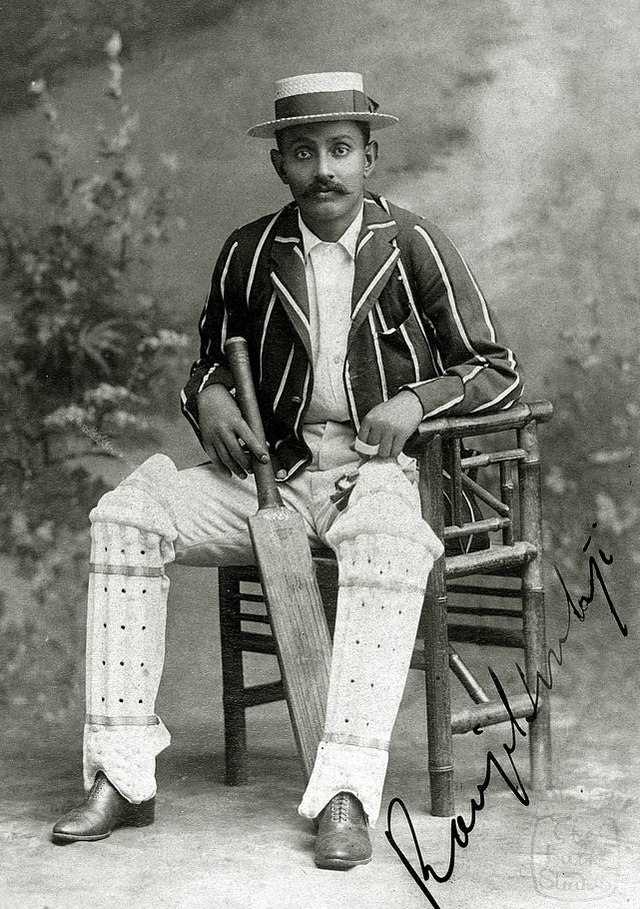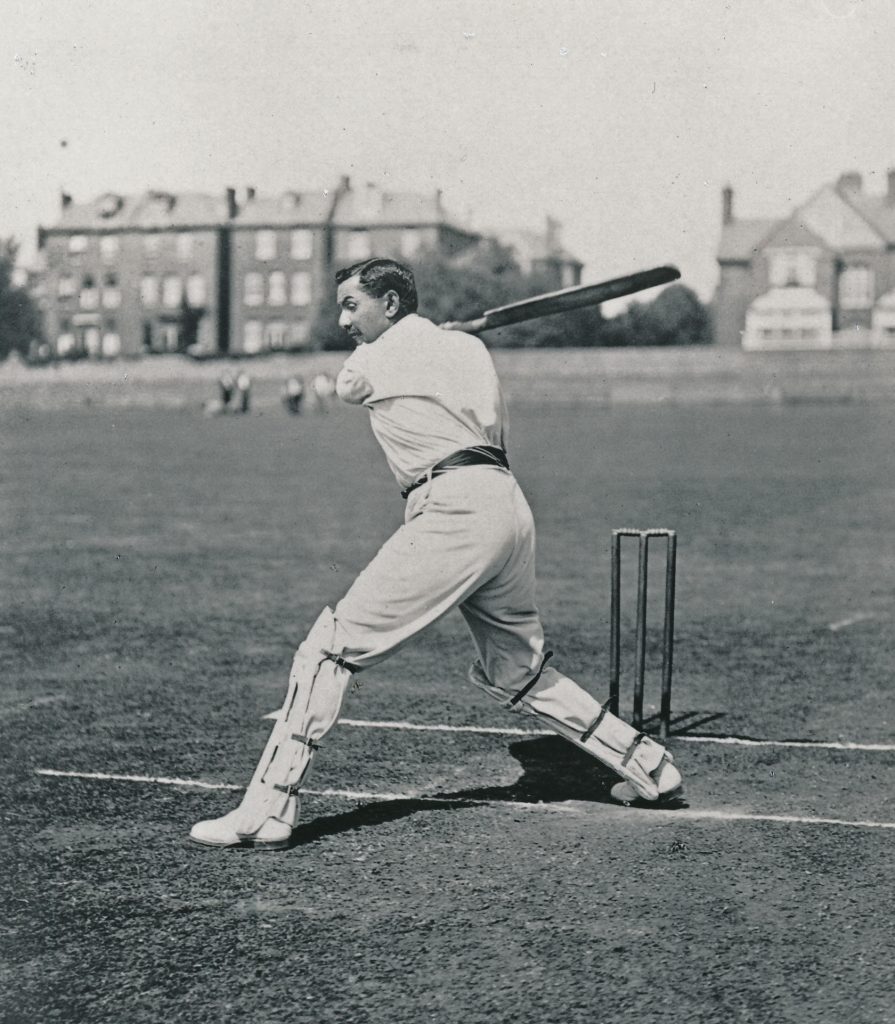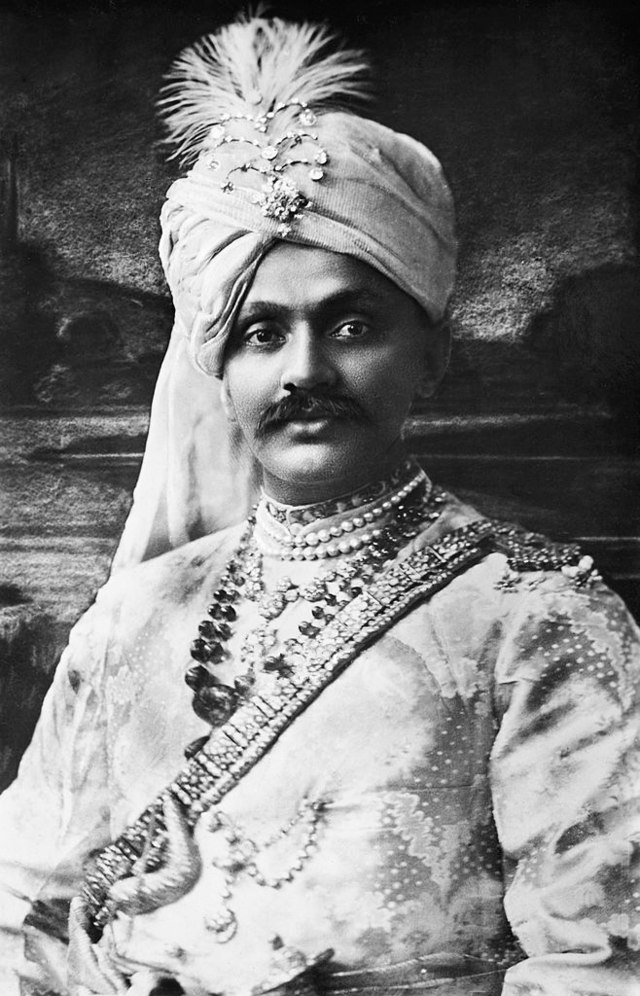A celebrity who attracted large crowds wherever he played
Within a year of making his debut for Sussex in 1895, Ranji was a huge celebrity, not just in the world of cricket but in the world of sport generally. He had an instant impact on the batting of Sussex and was soon attracting large crowds wherever he played, for the runs he scored but also the style in which he made his runs.
He was born in 1872, in relatively modest circumstances in Sarodar, in western India. His family was related to the ruling family and when an heir was needed to the throne of Nawanagar (the Jam Sahib), Ranji was chosen. He was sent away to the ‘school for princes’ in Rajkot but when a son was born to one of the wives of the current ruler, Ranji was taken to England in 1888 by his Headmaster Mr Macnaghten where, despite failing his entrance examination, he gained admittance to Trinity College, Cambridge University.
Ranji had played some cricket at school in India and he soon began to play again, motivated particularly by having seen the Australians at the Oval soon after his arrival in England. In Cambridge, Ranji played in local sides and employed local professional coaches to improve his batting style so that he was soon being talked about in cricketing circles in Cambridge. He was not immediately chosen for his college or indeed the Cambridge side until after the Cambridge captain , FS Jackson, realised the talent Indian cricketers had whilst he was on a tour to India in the winter of 1892-3. Ranji was awarded his university Blue in 1893 and two years later, in 1895, joined Sussex, having become good friends with Sussex players Billy Murdoch (Sussex captain) and CB Fry.


150 on his debut for Sussex
On his debut for Sussex in May 1895 , Ranji scored 77* and 150 against the MCC and he was soon a regular in the Sussex side. Ranji had exceptional eyesight, and was very flexible with strong wrists which allowed him to glance a good length ball off the middle stump in a way that very few others could do.
His runs soon earned him selection for the England side in 1896 but not until there had been a debate about his eligibility. On the advice of Lord Harris, Ranji was not selected for the Lord’s Test match. At that time the host ground selected the England teams so for the Second Test at Old Trafford he was selected (having first raised the matter with the Australians who raised no objections to Ranji playing). Ranji scored 62 and 154* so becoming only the second England batsman after WG Grace to score a century on his Test debut.
In 1897/8 Ranji toured Australia and in the first test scored 175 even though he had been ill. From then until 1902, he was a regular in the England side, scoring 989 runs in fifteen tests for his adopted country, at average of 44.95. It was though for Sussex that he made the majority of his runs. In 1896 he made 2,780 runs with 10 centuries and in 1899 scored 3,159 runs with eight centuries, becoming the first batsman to score over 3,000 runs. He repeated the feat in 1900 and in then in 1904 scored 2,077 runs.
A loyal servant of the British Empire
Overall, Ranji scored 1,000 runs in twelve seasons, and captained Sussex between 1899 and 1903. In total for Sussex he scored 18,594 runs between 1895 and 1920 at an average of 63.2 with a top score of 285no against Somerset in 1901.
In 1907 Ranji succeeded to the throne of Nawanagar becoming the Jam Saheb. He began to spend more time in Jamnagar, his capital, although he was still emotionally and socially tied to England and the lifestyle of the aristocracy. He was a loyal servant of the British Empire and during WW1 committed the resources of his state to fighting the war in Europe.
Ranji did make a comeback of sorts in 1920 but he was a shadow of his former self. He was on a visit to England and having watched a few matches, he just could not resist the temptation to make another comeback. He returned to captain the side in a game against Essex at Leyton. The news spread bringing to the game dozens of members of the press and a huge crowd. Coming onto the pitch he appeared portly and as play began his reactions were slow and cumbersome. He had lost the sight of one eye in a shooting accident in 1915 and when it was his turn to bat, he constantly tried to play the ball to the onside – the side of his good eye. He played his last innings for Sussex in 1920 at Hastings against Northamptonshire barely troubling the scorer.
